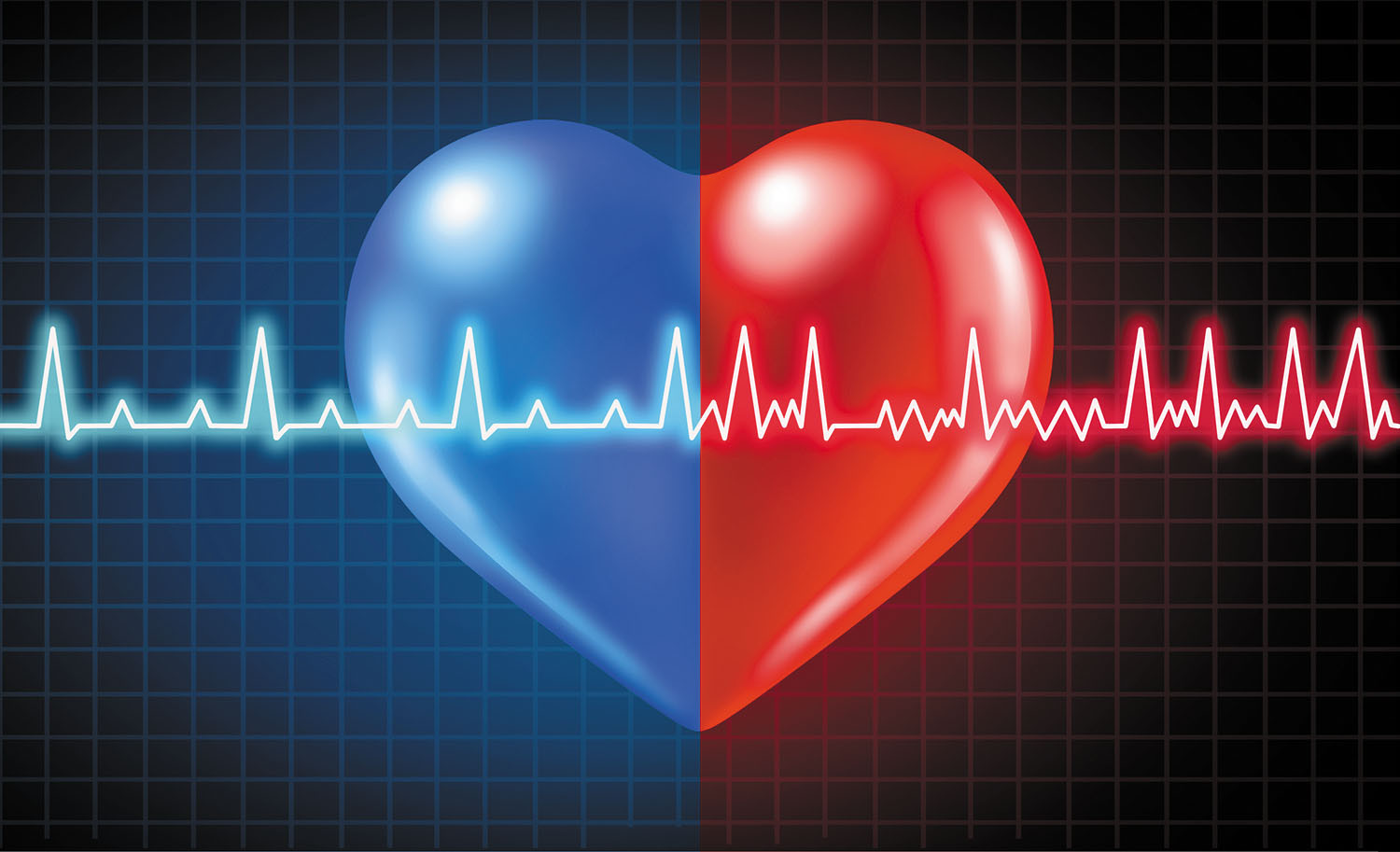The ABCs of atrial fibrillation
Here's what you need to know about this heart rhythm disorder, which can raise your risk of stroke.
- Reviewed by Howard E. LeWine, MD, Chief Medical Editor, Harvard Health Publishing; Editorial Advisory Board Member, Harvard Health Publishing

If you sometimes notice a fluttering, quivering sensation in your chest, you might have atrial fibrillation. About one in 11 men ages 65 and older has this heart rhythm disorder, commonly known as afib.
Afib causes an irregular and often faster-than-normal heartbeat. At rest, a normal heart rate is 60 to 100 beats per minute with a steady rhythm: beat... beat... beat. During afib, the heartbeat becomes erratic with an irregular rhythm: beat… beat... beat-beat-beat... beat. Afib can be persistent and chronic, or it can happen intermittently (paroxysmal atrial fibrillation).
People might have no symptoms with either variety, or they might feel lightheadedness, shortness of breath, chest pain, or extreme fatigue. But the biggest worry with afib is a fivefold increased risk of stroke.
"Science still does not fully grasp exactly why afib happens," says Dr. Paul Zei, director of the Comprehensive Atrial Fibrillation Program at Harvard-affiliated Brigham and Women's Hospital. "You can't cure afib, but there are ways to manage the condition."
Detecting afib
Many people with afib are not aware they have it. It's discovered when they notice their pulse is erratic or the doctor detects it during an office visit. However, new-onset afib may make the heart beat very fast, 150 or more times a minute. With a fast, irregular pace, the heart does not pump as effectively, and that's when serious symptoms occur.
While afib can affect people at any age, the risk of developing it increases as we grow older. Other issues that raise a person's risk include high blood pressure, sleep apnea, obesity, diabetes, moderate to heavy alcohol use, smoking, and heart disease. Early detection of afib is crucial. "The sooner it's diagnosed, the sooner you can begin treatment and protect against problematic symptoms and help lower your stroke risk," says Dr. Zei.
Afib can be diagnosed in the doctor's office with a standard ECG test, which records the heart's electrical activity. However, people with paroxysmal afib alternate between a regular rhythm and afib, and an office ECG will likely show a normal rhythm. They need an ambulatory ECG test, which requires wearing a monitoring device for a full day, or even up to two weeks, to record the heart's electrical activity over a longer period.
Rate control
The main therapeutic options for people with persistent afib are rate control and rhythm control. You and your doctor will determine which path you take, depending on your treatment goals, age, health conditions (especially stroke risk), and severity of afib symptoms.
Rate control involves taking a beta blocker like metoprolol (Lopressor, Toprol XL) to keep the heart rate within the normal range. For most people, it also means taking an anticoagulant (anti-clotting) drug indefinitely. With persistent afib, small blood clots that form in the heart can break away and block arteries in the brain and other parts of the body. Anticoagulant drugs thereby help prevent strokes. Doctors most often prescribe a direct-acting oral anticoagulant (DOAC), such as apixaban (Eliquis), dabigatran (Pradaxa), or rivaroxaban (Xarelto).
Rhythm control
With rhythm control, the goal is to stop the fibrillation and restore the heartbeat to a regular pattern. The long-term advantages of rhythm control rather than rate control are fewer afib symptoms, lower risk of weakening of heart muscle function, and the possibility of not needing anticoagulation.
If you and your doctor opt for rhythm control, there are several options. One is a procedure called electrical cardioversion. Here, a small electrical shock to the chest can "reset" the heart to a normal rhythm. You will need to take an anticoagulant drug before the cardioversion and for several weeks afterward. "Electrical cardioversion works in most people, but more than half eventually develop afib again," says Dr. Zei.
Another option is catheter ablation. Here, a doctor guides a thin, flexible tube (catheter) into a large vein and threads it up to the heart. There, it delivers zaps of radiofrequency heat energy to burn away small areas of tissue that may be causing the abnormal heartbeat. The overall success rate for catheter ablation is about 75%. Sometimes, people undergo a second procedure if the first one isn't effective, which boosts the success rate to nearly 90%.
Cardiologists sometimes try to convert patients back to a normal rhythm just with anti-arrhythmic drugs, such as dofetilide (Tikosyn) or flecainide (Tambocor). But these drugs have potentially serious side effects — including a higher risk of a more dangerous heart rhythm — so taking them could cancel any quality-of-life advantage.
People with paroxysmal afib can help avoid episodes with lifestyle changes, like getting enough sleep, managing stress, moderating caffeine intake, and limiting alcohol use. Otherwise, the treatment approach is similar to that for persistent afib.
Image: © wildpixel/Getty Images
About the Author

Matthew Solan, Executive Editor, Harvard Men's Health Watch
About the Reviewer

Howard E. LeWine, MD, Chief Medical Editor, Harvard Health Publishing; Editorial Advisory Board Member, Harvard Health Publishing
Disclaimer:
As a service to our readers, Harvard Health Publishing provides access to our library of archived content. Please note the date of last review or update on all articles.
No content on this site, regardless of date, should ever be used as a substitute for direct medical advice from your doctor or other qualified clinician.
















